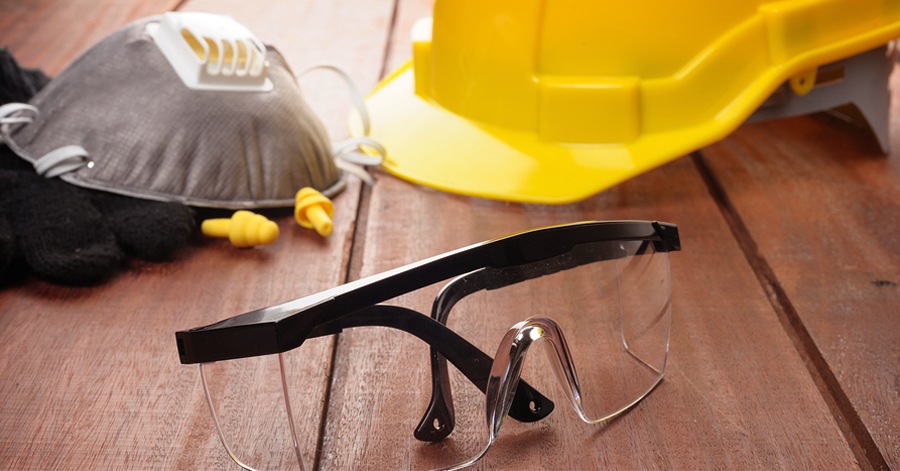
Is your vision blurred or do you see the importance of eye protection safety? According to the national institute for Occupational Safety and Health, a staggering 2,000 workers in the United States sustain job-related eye injuries that require medical attention every day.
Even so, eye doctors and safety experts strongly believe organizations should be able prevent or lessen the severity of up to 90% of these injuries with the proper eye protection safety. Continue reading to learn more about eye protection safety, who's at risk, and what you can do to ensure your workforce sees a clear future.
What are the Potential Eye Hazards at Work?
While it's vital to always consider eye protection safety in any industry, make sure to use protective eyewear when you are working with or around the following eye hazards:
Bloodborne Pathogens, such as bodily fluids and blood
Chemical splashes, spills, and fumes
Projectiles, such as wood, metal, concrete, dust, and other particles
Radiation, such as heat or infrared radiation, ultraviolet radiation, visible light, and lasers
Many working conditions such as construction worksites and manufacturing worksites may include a variety of eye hazards. Wearing the proper eye protection will help mitigate these risks. In addition to construction and manufacturing worksites, a few occupations with the highest risk for eye injury include:
- Mining
- Carpentry
- Electrical Work
- Plumbing
- Welding
- Maintenance
What Type of Eye Protection Safety Equipment Should Be Worn?
You should always know the OSHA safety requirements for your specific work environment and ensure you're in compliance. In addition to these requirements, employers should take the proper steps to ensure the workforce is as safe as possible, such as:
Providing employees with the proper eye protection safety equipment
Requiring employees to wear the right eye protection safety equipment
Reducing or removing eye hazards whenever and wherever possible
Conducting eye hazard assessments in the workplace
The actual type of eye protection safety equipment that should be worn will depend on the workplace. Some of the most common considerations include:
- Workers should wear goggles if they are working with chemicals
- If the workplace has flying dust, objects, or particles, the safety glasses should have side shields or side protection.
- If workers are operating near hazardous radiation, fiber optics, lasers, or welding, they should wear a special-purpose safety glasses, face shields, goggles, or helmets specifically designed for the task.
Eye Protection Safety Checklist
Regardless of your industry, there are a few simple steps you can take to prevent and avoid eye injuries. These simple tips will make everyone in the workplace more aware of the hazards and dangers outside of work.
Always Wear the Right Eye Protection
Although wearing the right protection may sound simple, failure to do so is one of the leading causes of eye injuries. Make sure to:
- Choose the right eye protection for the work site
- Ensure the eyewear properly fits and stays in place
- Inspect the eyewear to ensure it's in good condition.
Evaluating Eye Protection Safety Hazards
As with any safety protocol, one of the first steps is to identify the hazards in the area.
- Identify the main hazards in the workplace
- Identify eye hazards from shifting/falling objects, large machines, and nearby workers
Create Safer Work Environments with Smart Habits
A little common sense and good housekeeping can go a long way in eye protection safety.
- Clean goggles or protective eyewear on a regular basis.
- Never rub eyes with dirty clothing or dirty hands
- Before taking off protective eyewear, it's vital to vacuum, shake, or brush debris and dust from forehead, hard hats, and hair.
First Aid for Eye Injuries
Even with the best eye protection safety measures, accidents do happen. When they do, it's imperative for your organization to be prepared and take the proper steps based on your emergency action plan.
Steps for Metal Specks or Specks of Dust in the Eye
Never rub the affected eye
Make sure to flush the eye with a lot of water
If redness, pain, or if the speck doesn't wash out, see a doctor.
Punctures, Cuts, & Foreign Objects in the Eye
- In contrast to specks of metal or dust, you shouldn't wash the affected eye.
- You should avoid attempting to removing the object stuck in the eye.
- Instead, you should seek medical attention immediately.
Chemical Burns
- Instantly flush the eye with a drinkable liquid - preferably water. Attempt to open the eye as wide as possible and continue flushing it out with water for a minimum of 15 minutes. You should continue flushing the eye as you make your way to medical attention.
- If the worker has a contact lense stuck in their eye, you should start flushing with water again.
- In any case, seek medical attention.
Blunt Force the Eye
- Use a cold compress without applying pressure. You can tape crushed ice in a ziploc bag to the forehead, which will gently rest on the injured eye.
- If pain continues, make sure to seek medical attention. You should also seek medical attention if discoloration, blood, or blurred vision ensues.
Contact Premier Safety Partners
When it comes to eye protection safety, the organization has a duty to safety standards. Failure to do so can result in fines, injuries, and even fatalities.The best way to ensure you are in compliance and your workforce is safe is to consult with the health and safety experts at Premier Safety Partners.
Contact Premier Safety Partners today to schedule a consultation.





